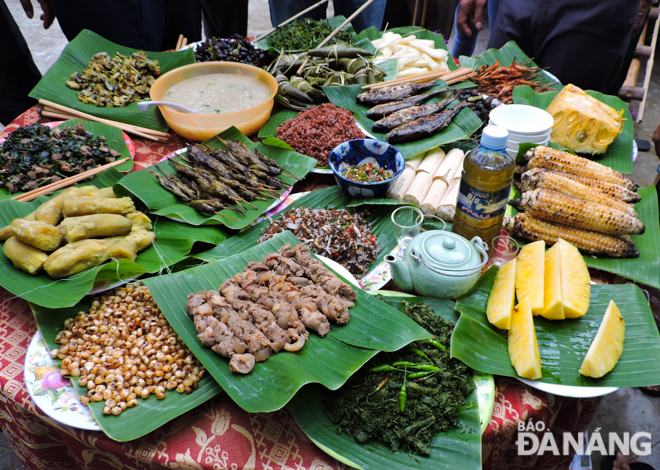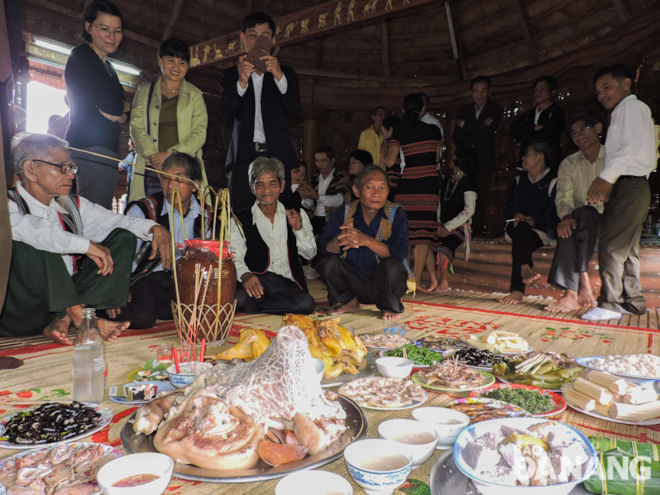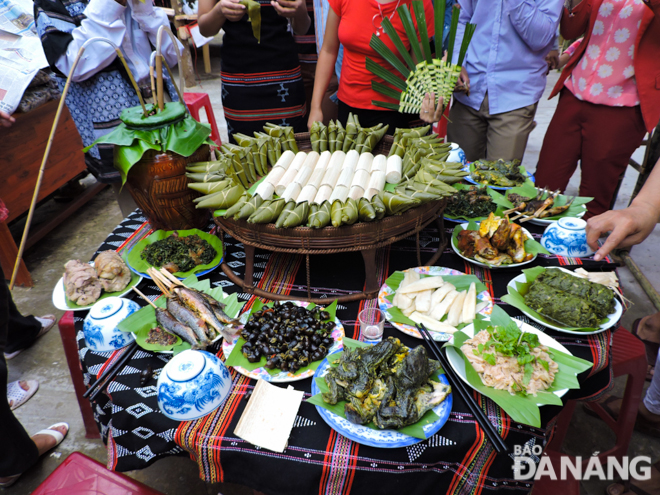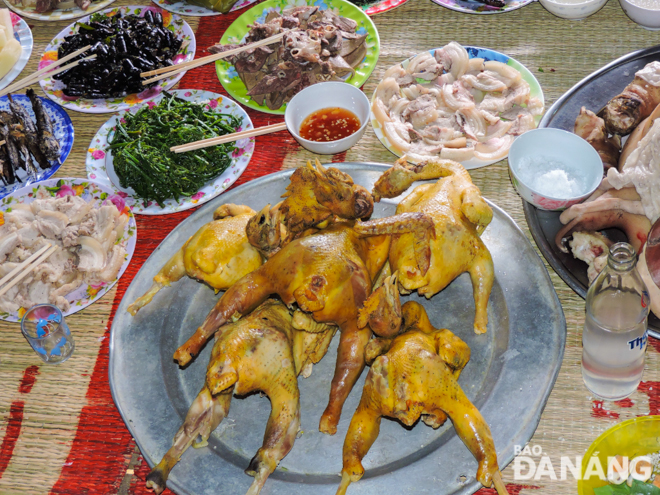Discover the cuisine of Co Tu ethnic people in Da Nang
In addition to visiting popular attractions and trying local specialities in Da Nang, visitors can take a tour to Hoa Phu and Hoa Bac communes in Hoa Vang District, to discover the cuisine of Co Tu ethnic minority people.
 |
| A table is full of specialities of Co Tu people |
Dishes of this ethnic minority group has similar ingredients with those of lowlanders such as vegetables, meat, and fish. However, the Co Tu people eat considerably a large proportion of meat in their meals.
Besides, Co Tu people use use of non-cultivated foods, of which wild fruits and vegetables are popular. Included are bamboo shoots, eggplants, luffa, cassava leaves, and Indian taros.
 |
| ‘com lam’ (rice cooked in bamboo tubes), and ‘banh sung trau’ ( buffalo horn-shaped cakes) |
One of the specialties of the Co Tu people is ‘com lam’ (rice cooked in bamboo tubes). In order to prepare for this dish, the bamboo chosen should be fresh and young so that the new membrane inside the tube can wrap the rice, adding it a special flavour, fragrance, and sweetness.
Sticky rice will be cleaned and soaked in water for several hours. Then, it will be carefully added into bamboo tubes, and the open ends of the bamboo tubes will be sealed with banana leaves.
Lastly, the tubes will be chargrilled on medium heat, and turned every few minutes until it smells pleasant.
 |
| A food tray at the Co Tu people’s Goul house |
Meanwhile, there are many ways to cook meat and fish. Most popularly, they are grilled directly on wood stoves or marinated with spices and then grilled into bamboo tubes as the same way to make ‘com lam’.
These amazing dishes are often served with typical salt which is pounded with chilies and forest peppers. Besides, there are two unique types of salt that are made from red wild ants and termites.
In order to make these types of salt, this ethinic minority group has to go deep into the forest to find red wild ants and termites. These wild tiny animals will be fried before being grinded with a very spicy chili, some herbs, and salt.
The uniqueness comes from the acid inside the bellies of these wild animals. The acid is like lemon combine with salt, along with the chilies, and the herbs make the salt a wonderful dip.
 |
| A jar of ‘ruoi can’ on the left corner of the table |
In addition to above-mentioned foods, the Co Tu people boast such specialties as grilled chickens, stir-fried cassava leaves, pork cooked in bamboo tubes, ‘la don’ (wild leaves) stir fried with minced garlic.
Most notably, ‘ruou can’ (rice wine drunk out of a jar through pipes) which is produced in the Phu Tuc Village is considered as indispensable drink in the meals of the Co Tu people.
In order to preserve the traditional craft of their ancestors, the Hoa Phu Commune authorities has cooperated with the municipal Department of Industry and Trade and the Department of Health to pay a special attention to ensuring the best quality of ‘ruou can’, and register a trademark for ‘Ruou Can Phu Tuc’. As a result, the product was recognised as high-quality product by the Viet Nam Standards And Quality Institute in 2016.
Apart from ‘ruou can’, the Co Tu people also make other wine known as ‘Ta Vat’, ‘Ta Din’, and ‘May Voi’.
 |
| Grilled chickens |
According to Mr Do Thanh Tan, Head of Hoa Vang District's Culture and Information Office, a tour to discover the cuisine of Co Tu people has been one of the most popular community-based tourism activities in Hoa Phu and Hoa Bac communes in recent years. It is considered as a way to promote the development of the tourism industry in this locality.